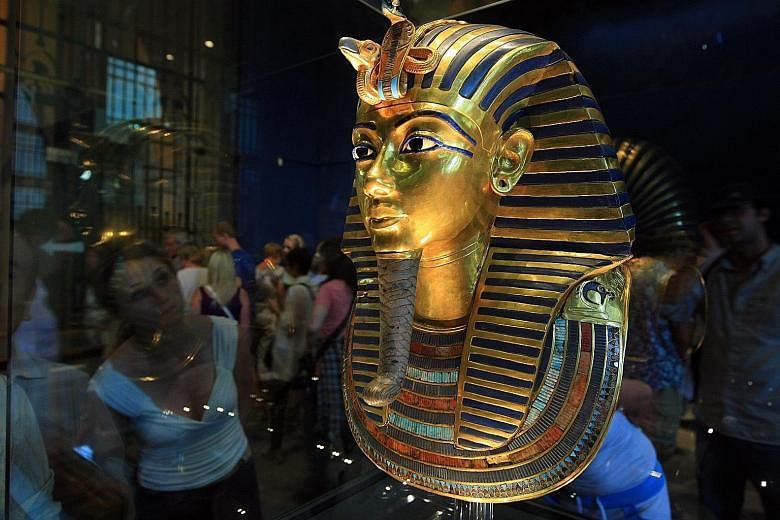CAIRO • Eight Egyptian museum officials are to face a disciplinary tribunal for their role in a botched repair job that caused lasting damage to the famed golden burial mask of King Tutankhamen, one of Egypt's most prized artefacts, the country's administrative prosecutor has said.
The judicial action is the latest step in an embarrassing saga at the state-run Egyptian Museum in Cairo that started in August 2014 when workers accidentally knocked the beard from the 3,300-year-old artefact as they repaired a light fixture in its display case, and then made things worse by trying to glue it back on.
Tourists took photos of museum employees as they reattached the blue-and-gold beard using an insoluble epoxy resin that left a visible ring of glue around the edge of the beard. Fears that the damage was irreversible proved unfounded, however, after German experts carefully removed the epoxy and restored the solid gold mask using beeswax, the adhesive used by the ancient Egyptians.
The mask was returned to public display last month, albeit with some fine scratches caused by improvised earlier attempts to remove the glue stains using a sharp object.
In a statement on Saturday, the administrative prosecution authority, which investigates legal violations involving public servants, accused eight officials, including a former director of the museum and a former head of restoration, of "gross negligence and blatant violation of scientific and professional rules".
"In an attempt to cover up the damage they inflicted, they used sharp instruments such as scalpels and metal tools to remove traces of the glue on the mask, causing damage and scratches that remain," the statement said.
The accused officials have been suspended from their jobs and now face possible dismissal and heavy fines, but they will not go to prison.
The scratches to the mask will not be visible to most visitors, according to Dr Monica Hanna, an archaeologist and a member of Egypt's Heritage Task Force, an initiative to protect the nation's cultural heritage. Dr Hanna blamed the debacle on declining standards at the 104-year-old museum, which is home to the world's largest collection of mummies and other pharaonic antiquities.
The mask of Tutankhamen, an enigmatic young king, was discovered by British archaeologist Howard Carter in the Valley of the Kings in 1922. It set off a global fascination with egyptology that became a cornerstone of Egypt's tourism industry.
NEW YORK TIMES

